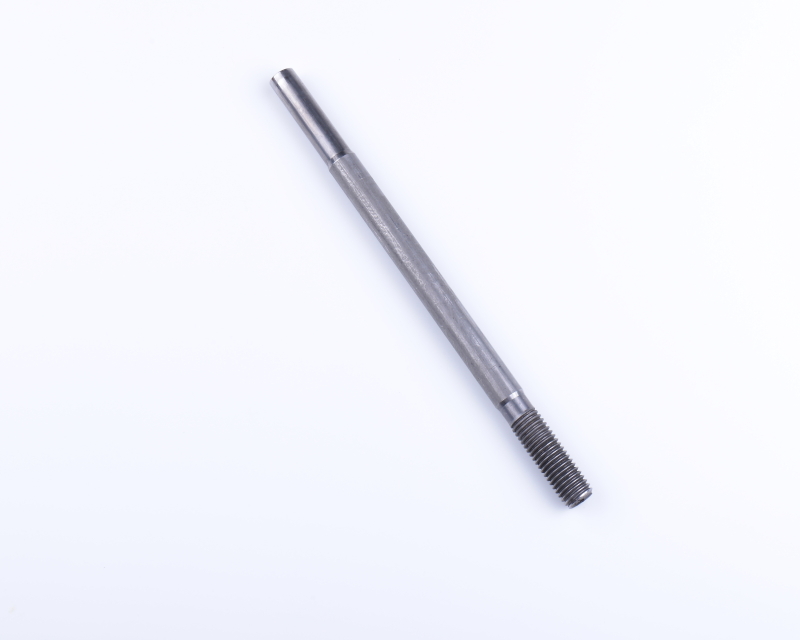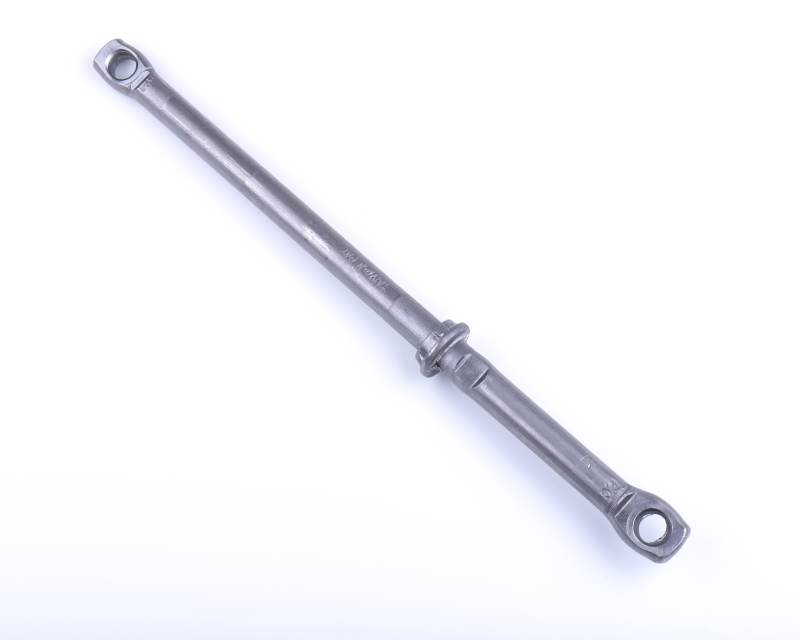Metal extrusion integrated molding processing

Metal Forming

Metal Forming
Metal forming is a process that involves shaping metal into a desired shape or form. Metal forming is used in many industries, including automotive, aerospace, medical, and consumer products. It is also used in manufacturing processes such as forging, stamping, and extrusion .It is an essential process in many modern industries, as it allows manufacturers to create components that are strong and reliable.
Metal forming has been used since ancient times. It is believed that the first metal forming process was melting, which is the process of heating metal ore to extract its metal content. This process was used to create tools and weapons. As technology advanced, new metal forming methods were developed, including forging and casting. These processes allow for the production of custom shapes, sizes, and designs.
Today, metal forming is used in a variety of industries. It is especially useful in the automotive industry, where it is used to create car bodies, engine components, and other parts. In the aerospace industry, metal forming is used to create components for aircraft and spacecraft. In the medical industry, metal forming is used to create implants, cosmetics, and other medical devices. In the consumer products industry, metal forming is used to create products such as jewelry, cookware, and small appliances.
Metal forming is a complex process that requires specialized equipment and expertise. It requires a deep understanding of metal properties and the ability to create complex shapes. The process also requires precision and accuracy, as even small flaws can cause major problems.
Metal forming processes are typically divided into two categories: hot forming and cold forming. Hot forming processes involve heating the metal to a certain temperature before shaping it. Cold forming processes involve shaping the metal without heating it. Each process dis has its advantages and, and both are used in different industries.
Metal forming is an essential process in many industries. It allows manufacturers to create components that are strong and reliable. It also allows them to create custom shapes and sizes, as well as complex designs. , allowing manufacturers to create products that are safer and more efficient.
Metal extrusion integrated molding processing
Metal extrusion integrated molding processing is a manufacturing technique that involves the use of extrusion to shape and form metal components or products with a high degree of precision and consistency. This process is commonly used in industries such as aerospace, automotive, construction, and manufacturing, where complex and customized metal parts are required. Here's an overview of the key aspects of metal extrusion integrated molding processing:
1. Extrusion Process: The core of this manufacturing method is the extrusion process, which involves forcing a metal billet or preform through a die orifice under high pressure. The die has a specific cross-sectional shape that defines the shape of the final product. The metal material is heated to a suitable temperature to facilitate plastic deformation.
2. Integration: The term "integrated molding" implies that the extrusion process is combined with other techniques or processes to achieve specific goals or characteristics in the final product. Integration can include multiple extrusion steps, additional forming operations, or the inclusion of other components.
3. Types of Extrusion: There are two primary types of metal extrusion commonly used in integrated molding processing:
Hot Extrusion: In hot extrusion, the metal material is heated to a temperature above its recrystallization point, making it more malleable. This process is suitable for materials like aluminum, copper, and steel.
Cold Extrusion: Cold extrusion is performed at or near room temperature, and it is typically used for materials that become brittle at high temperatures, such as certain types of steel and non-ferrous metals.
4. Complex Geometries: Metal extrusion integrated molding processing is well-suited for creating complex and intricate shapes that would be challenging or costly to achieve using other manufacturing methods. The die design determines the final shape, so a wide range of profiles and cross-sectional shapes can be produced.
5. Precision and Consistency: One of the key advantages of this process is its ability to produce parts with a high degree of precision and consistency. Tight tolerances can be achieved, and the process is repeatable, resulting in uniform products.
6. Post-Extrusion Operations: After the initial extrusion, further machining, cutting, or assembly steps may be integrated into the process to create finished components. These secondary operations can be performed while the metal is still hot (if using hot extrusion) or after it has cooled.
7. Material Selection: The choice of metal material is essential in metal extrusion integrated molding processing. Different metals have varying properties, strengths, and characteristics, which can affect the process parameters and final product performance.
8. Applications: Metal extrusion integrated molding processing is used in a wide range of applications, including the production of structural components, window and door frames, automotive parts, heat sinks, electrical connectors, and more.
9. Tooling and Die Design: Tooling and die design are critical elements in the success of this process. The die must be designed with precision to achieve the desired shape and quality of the extruded product.
10. Cost Efficiency: Depending on the complexity of the component and the required volume, metal extrusion integrated molding processing can be a cost-effective manufacturing method due to reduced material waste and shorter production times.
Overall, metal extrusion integrated molding processing is a versatile manufacturing technique that offers precision, flexibility, and the ability to produce complex metal parts with consistent quality. It is widely used in various industries to create a wide range of components and products.
11. Billet Preparation: The quality and uniformity of the metal billet or preform play a crucial role in the extrusion process. Proper billet preparation, including heating to the correct temperature, is essential to achieve the desired results.
12. Die Lubrication: To reduce friction and wear during extrusion, die lubrication is often employed. Lubricants or coatings can improve the flow of the metal through the die and enhance the surface finish of the extruded product.
13. Cooling and Quenching: Depending on the material and the desired properties of the final product, cooling and quenching may be necessary after extrusion to control the metal's microstructure and mechanical properties.
14. Multi-Step Extrusion: Complex shapes or components may require multi-step extrusion processes, where the workpiece undergoes multiple extrusion passes through different dies to achieve the final shape. Each step refines the shape and dimensions further.
15. Alloy Selection: The choice of metal alloy is critical, as it determines the material's characteristics, including strength, corrosion resistance, and thermal conductivity. Different alloys may require different extrusion parameters.
16. Heat Treatment: Depending on the material and application, heat treatment processes such as annealing or tempering may be integrated into the manufacturing process to enhance the material's properties.
17. Surface Finish: The extrusion process can produce components with a wide range of surface finishes, from as-extruded rough surfaces to smooth, polished finishes. The choice of finish depends on the intended use and aesthetics of the final product.
18. Quality Control: Quality control measures are essential throughout the entire extrusion process. This includes monitoring process parameters, inspecting extruded products for defects, and conducting testing to ensure that the final components meet the required standards.
19. Scrap Management: Proper scrap management and recycling practices can help reduce waste in the extrusion process. Excess material trimmed from extruded products can often be recycled, minimizing environmental impact.
20. Tool Wear and Maintenance: The dies and tooling used in extrusion can experience wear over time due to the high pressures and temperatures involved. Regular maintenance and replacement of worn components are necessary to maintain product quality and production efficiency.
21. Material Handling and Safety: Metal extrusion involves heavy machinery and high temperatures, making safety a top priority. Adequate training, safety protocols, and equipment maintenance are crucial to protect workers and maintain a safe production environment.
22. Customization: The versatility of metal extrusion allows for customization of products to meet specific design requirements. This includes variations in shape, size, and material properties.
23. Environmental Considerations: Manufacturers are increasingly focused on environmentally friendly practices. Some extrusion processes may incorporate sustainable practices, such as using recycled materials or optimizing energy efficiency.
24. Market Applications: Metal extrusion integrated molding processing is used in various industries, including aerospace, automotive, construction, electronics, and consumer goods. Its versatility makes it suitable for both small-scale and large-scale production.
Overall, metal extrusion integrated molding processing is a highly versatile and efficient manufacturing method that can produce a wide range of metal components with precision and consistency. Its applicability to various industries and its ability to create complex shapes make it a valuable technology in modern manufacturing.
25. Aluminum Extrusion: Aluminum is one of the most commonly extruded metals due to its favorable properties, including lightweight, corrosion resistance, and excellent formability. Aluminum extrusions find extensive use in industries such as architecture, transportation, and consumer goods.
26. Profile Extrusion: Profile extrusion is a specific application of metal extrusion that is used to create customized profiles or shapes. This is commonly seen in industries like construction, where aluminum profiles are used for window frames, curtain walls, and structural components.
27. Seamless Extrusion: Some advanced extrusion processes can produce seamless or nearly seamless metal components. This is especially important in applications where leaks or structural weaknesses are a concern.
28. Hollow Extrusions: Extrusion can be used to create hollow shapes, such as tubes and pipes, with precision and uniform wall thickness. These hollow extrusions have applications in industries like plumbing, automotive, and furniture manufacturing.
29. Surface Treatments: After extrusion, metal components may undergo various surface treatments to enhance their appearance, durability, or performance. These treatments can include anodizing, powder coating, painting, or plating.
30. Aerospace Applications: The aerospace industry relies heavily on metal extrusion for the production of aircraft components, including structural elements, landing gear, and engine parts. Extruded components are often preferred for their strength-to-weight ratio.
31. Automotive Applications: In the automotive industry, metal extrusion is used for manufacturing components like heat exchangers, transmission parts, and structural components in vehicles. Aluminum extrusions are increasingly used to reduce weight and improve fuel efficiency.
32. Energy Sector: Metal extrusion plays a role in the energy sector, with applications in the production of heat exchangers, solar panel frames, and wind turbine components.
33. Cost-Effective Production: Extrusion can be a cost-effective method for producing large quantities of complex metal components. Its efficiency, minimal material waste, and repeatability make it attractive for high-volume production.
34. Continuous vs. Semi-Continuous Extrusion: Extrusion processes can be categorized as continuous or semi-continuous. Continuous extrusion involves a constant flow of material through the die, while semi-continuous extrusion involves intermittent material feed.
35. Recycling: Metal extrusion aligns well with recycling efforts. Scrap material generated during the process can often be recycled and used for new extrusions, reducing material waste and environmental impact.
36. Die Design and Optimization: The design of the extrusion die is critical in achieving the desired shape and properties of the final product. Advanced die design and optimization techniques can lead to improved efficiency and product quality.
37. Simulation Software: Computer-aided design (CAD) and simulation software are frequently used in metal extrusion processes to model and analyze the behavior of materials during extrusion. This aids in process optimization and product development.
38. Research and Development: Ongoing research and development in materials science and extrusion technology continue to expand the capabilities of metal extrusion and lead to innovations in product design and performance.
39. Supplier Network: Many industries rely on a network of suppliers specializing in metal extrusion to provide custom solutions. Collaborative relationships with suppliers are often crucial for meeting specific project requirements.
40. Sustainability: Sustainable practices, such as reducing energy consumption and minimizing waste, are becoming increasingly important in metal extrusion processes to address environmental concerns and meet regulatory requirements.
Metal extrusion integrated molding processing remains a versatile and evolving manufacturing method, offering opportunities for innovation and advancement in various industries. As technology and materials continue to evolve, so do the possibilities for using metal extrusion to create complex, high-quality metal components and products.
41. Material Testing: Quality control and material testing are essential aspects of the extrusion process. This includes conducting tensile tests, hardness tests, and other evaluations to ensure that the material properties meet the required specifications.
42. Custom Die Design: Customized die design allows manufacturers to produce unique and complex extruded shapes. Die designers use computer-aided design (CAD) software to create dies that match the desired product's specifications precisely.
43. Heat Exchangers: Metal extrusion is commonly used in the production of heat exchangers for various applications, including HVAC systems, refrigeration, and industrial processes. The precision of extrusion ensures efficient heat transfer.
44. Hollow Structural Sections: Extruded hollow sections are often used in construction for building frames, curtain walls, and architectural elements. These sections offer a balance of strength and reduced weight.
45. Aerospace Extrusions: In the aerospace industry, extruded aluminum and titanium components are used in aircraft structures and assemblies. These components need to meet stringent safety and quality standards.
46. Sustainability Initiatives: Many industries are incorporating sustainability initiatives into their manufacturing processes. Metal extrusion can support these efforts by enabling lightweight designs and efficient use of materials.
47. Post-Extrusion Processes: After extrusion, secondary processes such as CNC machining, welding, assembly, and finishing may be required to create the final product. These processes need to be integrated seamlessly into the production workflow.
48. Complex Cross-Sections: Extrusion allows for the creation of complex cross-sectional profiles, including those with multiple voids, intricate geometries, and varying wall thicknesses.
49. Lubricant Selection: Choosing the appropriate lubricant for the extrusion process is crucial. The lubricant minimizes friction between the billet and the die, facilitating smooth material flow and reducing wear on equipment.
50. Certification and Compliance: Depending on the industry and application, metal extrusions may need to comply with specific certifications and standards. Manufacturers must adhere to these requirements to ensure product quality and safety.
51. Quality Assurance: Quality control processes, including inspections and testing, should be implemented at various stages of the extrusion process to identify defects and maintain product consistency.
52. Scrap Management and Recycling: Scrap material generated during extrusion can often be recycled, contributing to resource efficiency and sustainability goals.
53. Production Efficiency: Continuous improvements in extrusion technology and equipment have led to enhanced production efficiency, reduced lead times, and increased throughput.
54. Noise Reduction: Noise reduction measures, such as soundproof enclosures and vibration-damping technologies, may be employed to create a more comfortable and safer working environment for operators.
55. Safety Standards: Strict safety standards and protocols are essential in metal extrusion facilities to prevent accidents and ensure the well-being of workers.
56. Material Waste Reduction: Minimizing material waste through optimized die design and process control can result in cost savings and environmental benefits.
57. Industry Collaboration: Collaboration among manufacturers, suppliers, and industry organizations can drive innovation in metal extrusion processes and promote best practices.
58. Global Supply Chains: Metal extrusion is a global industry with supply chains that span across regions. International cooperation and logistics are crucial for sourcing raw materials and distributing finished products.
Metal extrusion integrated molding processing continues to evolve, driven by advancements in technology, materials, and industry requirements. It plays a pivotal role in modern manufacturing, enabling the production of intricate metal components and products across a wide range of industries. As manufacturing processes continue to adapt to changing needs and sustainability concerns, metal extrusion remains a versatile and valuable method for shaping and forming metals.
